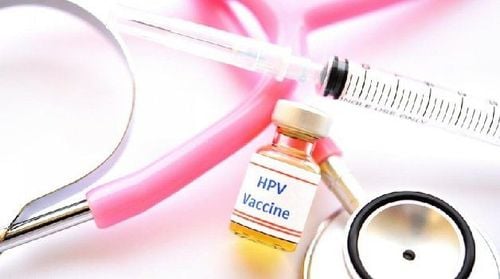This is an automatically translated article.
The article was written by Specialist Doctor I Le Thi Nha Hien - Internal Oncologist, Department of Medical Examination & Internal Medicine - Vinmec Nha Trang International General Hospital.Viruses enter a living cell and "Hoverhead" the cell's machinery to reproduce and create more viruses. Some viruses do this by inserting their own DNA (or RNA) into the host cell. When DNA or RNA affects a host cell's genes, it can cause the cell to become cancerous.
In general, each virus tends to infect only a certain type of cell in the body. (For example, the virus that causes the common cold only infects the cells lining the nose and throat.)
Some viruses have been linked to cancer in humans. Our growing understanding of the role of viruses as a cause of cancer has led to the development of vaccines to help prevent certain human cancers. But these vaccines can only protect against infection if they are given before the person is exposed to the cancer-causing virus.
Some viruses can cause cancer in humans such as: Human papillomavirus; Epstein Barr virus; Hepatitis B, C virus; Human immunodeficiency virus (HIV); Human Herpesvirus 8; Human T-lymphotropic virus 1...
1.Human papillomavirus (HPV): Human papillomaviruses (HPVs) are a group of more than 150 related viruses. They are called papillomas because some of them cause papillomas, commonly known as warts. Some types of HPV develop only on the skin, while others develop in mucous membranes such as the mouth, throat, or vagina.
All types of HPV are spread by contact (touch). More than 40 types of HPV can be sexually transmitted. Most sexually active people are infected with one or more of these HPV types at some point in their lives. At least a dozen of these are known to cause cancer.
While HPV infections are very common, cancers caused by HPV are not. Most people infected with HPV will not develop cancer related to the infection. However, some people have persistent high-risk HPV infections that put them at increased risk of developing cancer.
HPV infection of the mucous membranes can cause genital warts, but they are often asymptomatic. There are no effective drugs or treatments for HPV, other than removing or destroying cells known to be infected. But in most people, the body's immune system controls or clears the HPV infection over time.
HPV can cause cancer of the cervix, anus, penis, vagina, mouth, throat...
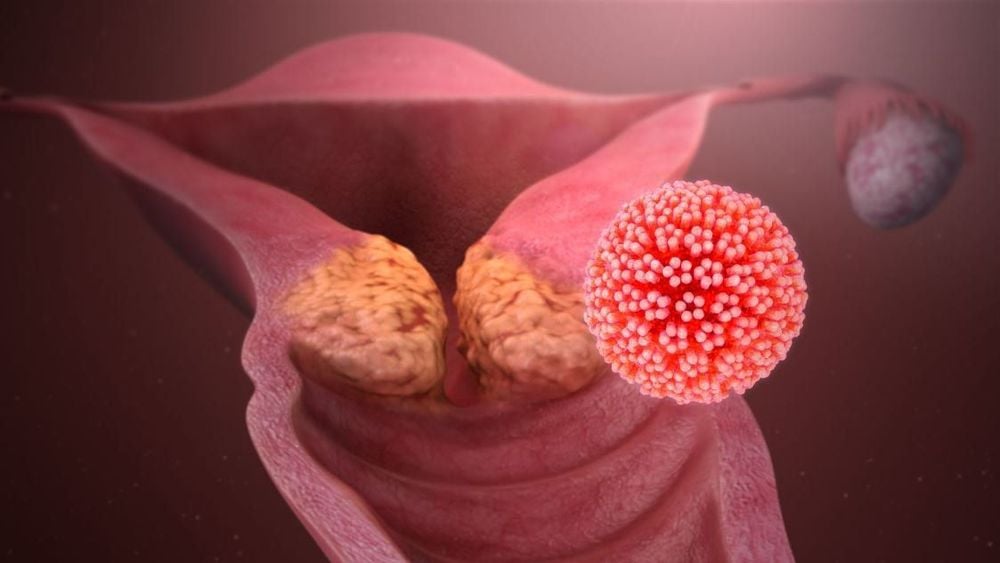
2. Epstein-Barr virus (EBV) EBV is a type of herpes virus. It is perhaps best known for causing infectious mononucleosis, commonly known as “monopathy” or “kissing disease.”
In addition to kissing, EBV can be passed from person to person through coughing, sneezing, or sharing eating utensils. Most people in the United States are infected with EBV in their late teen years, although not everyone develops symptoms of mono.
As with other herpes virus infections, EBV infection lasts a lifetime, even if most people have no symptoms after the first few weeks. EBV infects and resides in certain white blood cells in the body called B lymphocytes (also called B cells). There is no medicine or other treatment to get rid of EBV, nor is there a vaccine to help prevent it, but EBV infection doesn't cause serious problems in most people.
EBV infection increases a person's risk of nasopharyngeal cancer and certain types of fast-growing lymphomas such as Burkitt lymphoma. It may also be associated with Hodgkin lymphoma and some cases of stomach cancer. EBV-associated cancers are more common in Africa and parts of Southeast Asia. In general, very few people who have been infected with EBV will develop these cancers.
>>> Diagnosis and treatment of EBV virus
3. Hepatitis B virus and hepatitis C virus (Hepatitis B virus, C – HBV, HCV) Both HBV and HCV cause viral hepatitis, an infection liver infection. Other viruses can also cause hepatitis (eg, hepatitis A virus), but only HBV and HCV can cause long-term (chronic) infections that increase a person's risk of liver cancer. In the United States, less than half of liver cancers are associated with HBV or HCV infection. But the number is much higher in some other countries, where both viral hepatitis and liver cancer are much more common.
Some studies also suggest that long-term HCV infection may be associated with certain other cancers, such as non-Hodgkin's lymphoma.
HBV and HCV are spread from person to person in the same way as HIV - through sharing needles (such as when injecting drugs), unprotected sex, or childbirth.
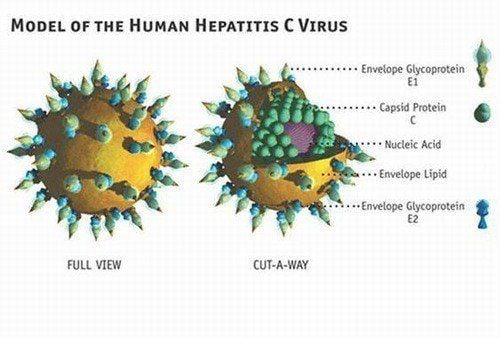
4. Human immunodeficiency virus (HIV)- human immunodeficiency virus HIV, the virus that causes acquired immunodeficiency syndrome (AIDS), does not directly cause cancer. But HIV infection increases a person's risk of certain types of cancer, especially some that have been linked to other viruses.
HIV can be transmitted through semen, vaginal fluids, blood and breast milk from an HIV-infected person.
HIV infects and destroys white blood cells called helper T cells, which weaken the body's immune system. This can allow certain other viruses, such as HPV, to thrive, which can lead to cancer.
Many scientists think that the immune system is also important in attacking and destroying newly formed cancer cells. A weak immune system can allow new cancer cells to survive long enough to develop into a serious, life-threatening tumour.
HIV infection is associated with a higher risk of developing Kaposi's sarcoma and cervical cancer. It is also associated with certain types of non-Hodgkin lymphoma, especially central nervous system lymphoma.
Other cancers that may be more likely to develop in people with HIV include:
Anal cancer Hodgkin's disease Lung cancer Oral and throat cancer Certain types of skin cancer Liver cancer 5. Human herpesvirus 8 (HHV-8) HHV-8, also known as Kaposi sarcoma-associated herpes virus (KSHV), has been found in most tumors in Kaposi sarcoma (KS) patients. KS is a rare, slow-growing cancer that usually appears as purple-red or greenish-brown lumps just under the skin.
In KS, blood cells and lymphatic vessels are infected with HHV-8. The infection causes them to divide too much and live longer than usual. These types of changes can eventually turn them into cancerous cells.
HHV-8 is sexually transmitted and also seems to be spread in other ways, such as through blood and saliva. Studies have shown that less than 10% of people in the US are infected with this virus.
HHV-8 infection lasts a lifetime (as with other herpes viruses), but it does not appear to cause illness in most healthy people. More people infected with HHV-8 than ever before develop KS, so it's likely that other factors are also needed for it to develop. Having a weakened immune system seems to be one such factor.
In the US, almost all people who develop KS have other illnesses that weaken their immune systems, such as HIV infection or immunodeficiency after an organ transplant.
KS was rare in the United States until it started showing up in people with AIDS in the early 1980s. The number of people with KS has been declining in the US since peaking in the early 1990s, most likely due to better treatment for HIV infection.
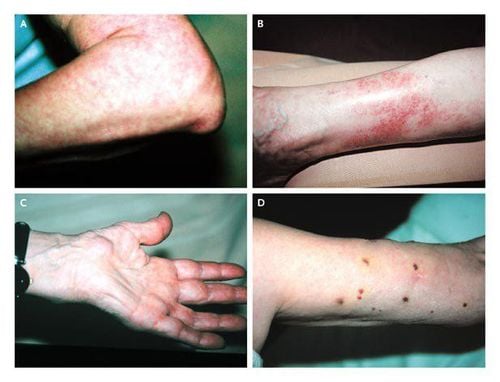
HHV-8 infection is also associated with some rare blood cancers, such as primary effusion lymphoma. This virus is also found in many people with multicentric Castleman disease, an overgrowth of the lymph nodes that behave a lot like and often develop into lymphoma (lymphoma).
6. Human T-lymphotropic virus-1 (HTLV-1) HTLV-1 is associated with a type of lymphoid leukemia and non-Hodgkin lymphoma called adult T-cell leukemia/lymphoma ( ATL). This cancer is found mainly in southern Japan, the Caribbean, central Africa, parts of South America, and in some immigrant groups in the southeastern United States
HTLV-1 belongs to a class of viruses called retroviruses. These viruses use RNA (instead of DNA) for their genetic code. To reproduce, they have to go through the extra step of changing their RNA genes into DNA.
Some new DNA genes can then become part of the chromosomes of infected human cells. This can change the way cells grow and divide, which can sometimes lead to cancer.
HTLV-1, like HIV, is another human retrovirus. But HTLV-1 cannot cause AIDS. In humans, HTLV-1 is spread in the same ways as HIV, such as having unprotected sex with a partner infected with HTLV-1 or injecting it with a needle after an infected person has used it. Mothers infected with HTLV-1 can also pass the virus to their babies, although this risk can be reduced if the mother does not breastfeed.
HTLV-1 infection is rare in the United States. Less than 1% of people in the US are infected with HTLV-1, but the rate is much higher in high-risk populations (such as people who inject drugs). Since 1988, all blood donated in the United States has been screened for HTLV-1. This has greatly reduced the risk of transmission through blood transfusion, and has also helped control the potential for HTLV-1 infection to spread.
After being infected with HTLV-1, a person's chance of developing ATL can be up to about 5%, usually after a long period of being symptom-free (20 years or more).
7. Merkel cell polyomavirus (MCV) MCV was discovered in 2008 in samples from a rare and dangerous type of skin cancer called Merkel cell carcinoma. Most people are infected with MCV at some point (usually in childhood) and it usually causes no symptoms. But in a small number of people with this infection, the virus can affect the DNA inside cells, possibly leading to Merkel cell cancer. Nearly all of Merkel's cell cancers are now thought to be related to this infection.
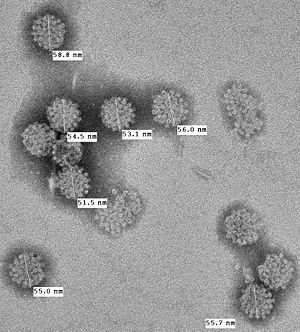
It is still unclear how people become infected with this virus, but it has been found in several places on the body, including normal skin and saliva
Vinmec International General Hospital is one of the hospitals that not only ensures professional quality with a team of leading medical doctors, a system of modern equipment and technology. The hospital provides comprehensive and professional medical examination, consultation and treatment services, with a civilized, polite, safe and sterile medical examination and treatment space. Customers when choosing to perform tests here can be completely assured of the accuracy of test results.
Please dial HOTLINE for more information or register for an appointment HERE. Download MyVinmec app to make appointments faster and to manage your bookings easily.







